20 December 2022
Festive time fallen: World War Two’s Christmas casualties
This holiday season we’ve taken time out to reflect on Christmas day casualties from key years of World War Two.
Casualties at Christmas from World War Two
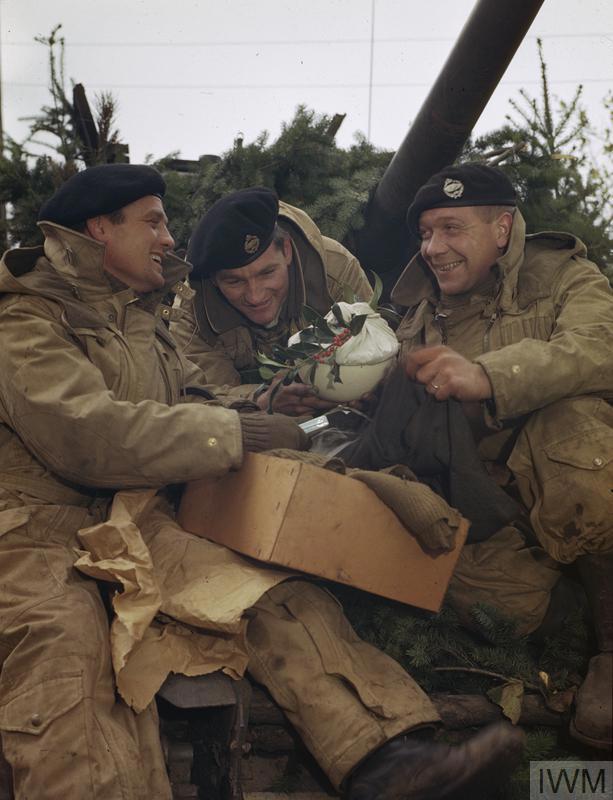
British tankers share their Christmas pudding (© IWM TR 2571)
Christmas casualties: 1939
1939 was the first year of World War Two, although much of the fighting was between Poland and Nazi Germany.
The first months of the year are usually referred to as the Phoney War in the UK. It was more a period of strategizing and preparing for the long war to come.
That said, the Phony War belies the fact that, regardless of the circumstances, the then-British Empire was at war. Navies and air forces around the Empire were certainly busy and taking part in early phases.
An essential aspect of any war, from the dawn of history up to present-day conflicts, is logistics.
The men and women of the Merchant Fleet were a vital cog in the war effort. Over the course of the war, tens of thousands would lose their lives transporting much-needed ammunition, food, and other cargo across treacherous sea routes.
The merchant fleet had begun taking casualties in the earliest months of the war. German U-boats lurked beneath the waves. Not even the sanctuary of British coastal waters was free of these underwater menaces.
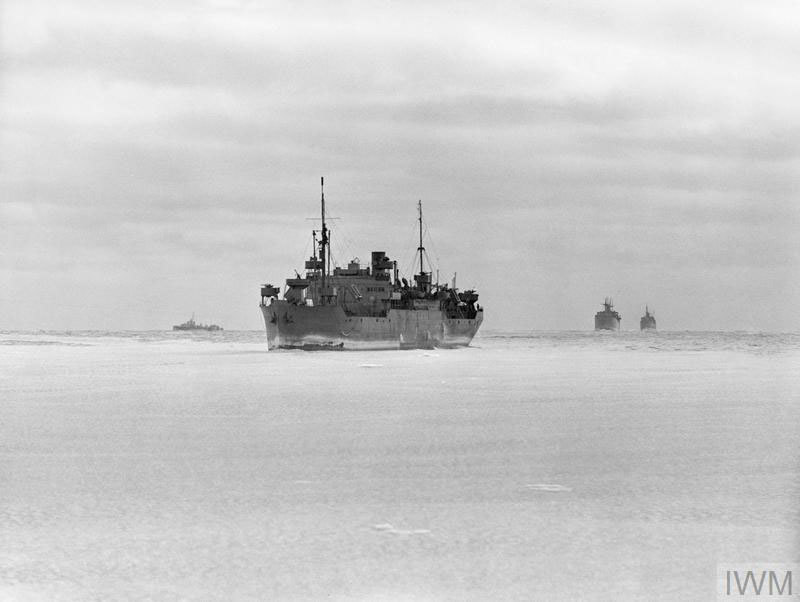
Merchant navy vessels making their way across the seas (© IWM A 15358)
As well as waiting beneath the waves to strike at unsuspecting prey, U-boats would also lay mines in coastal waters. The Bristol Channel on England’s Southwest coast quickly became a target for U-boat mines, as German submarines hoped to keep the important vital port locked up.
One ship that fell victim to a German mine was the SS Stanholme.
At 08:45 on Christmas Morning, 1939, Stanholme was steaming out of Bristol harbour and up the channel, heading for open seas, when it struck a mine. The mine had been laid by the German submarine U-33.
While 11 men were plucked from the water and rescued by the Norwegian merchant vessel Liv, 13 of Stanholme’s crew were killed. They are today commemorated on the Tower Hill Memorial in London alongside more than 36,000 merchant casualties from the World Wars.
Amongst their number was Wallace William Cusa. Wallace was Stanholme’s Third Engineer Officer and one of the oldest casualties commemorated at Tower Hill, passing aged 61.
Wallace was superseded in age by his colleague Second Officer David Baum who died in the sinking of the Stanholme aged 68.
Contrasting David and Wallace was Ordinary Seaman John O’Neill. John was 21 years old when Stanholme sank. You will often find age disparities like this in the Merchant Navy.
Christmas casualties: 1940
World War Two went from “phoney” to incredibly real for the British military in 1940. However, it was a year of setbacks for the British Empire and its allies.
1940 was the year of disasters in Norway. It was the year France fell and the year of the Dunkirk evacuation. For many, the Wehrmacht, Kriegsmarine, and Luftwaffe seemed unbeatable. Of course, we know in hindsight this wasn’t the case, but 1940 was a bleak year for the Allied war effort.
By the end of the year, however, British, Indian, and Anzac troops were making successes combating Italian advances in North Africa. We know that the war in North Africa would be a long, drawn-out affair, but the early stages were promising for Britain.
Meanwhile, at sea, the Merchant Navy was starting to see its responsibilities and workload increase rapidly. The war was escalating in Europe, Africa and soon Asia. Supply and logistics took on a new dimension of importance.
Frontline troops, medical personnel, and civilians at home and abroad needed millions of tons of supplies to keep going. The Merchant Navy’s job was to transport increasingly high volumes of goods to where it was needed.
The SS Jumna was amongst the hundreds of thousands of commercial vessels pressed into wartime service.
Since 1939, Jumna had zipped between Singapore, India, South Africa, Canada, Cuba, Jamaica, Malta, and the UK to name just a few destinations, ferrying much-needed supplies.
Over time, Jumna would take a prominent position in various Trans-Atlantic convoys. On 16th December, for example, Jumna was the commodore ship of Convoy OB 250, carrying its leader Rear-Admiral Henry Maltby.
However, the strength of convoys was numbers. When OB 250 dispersed at sea on 19th December, its constituent vessels were vulnerable. German ships and submarines were always lurking. An individual ship would make easy prey.
This was to be Junma’s fate.
On Christmas Day 1940, Junma was spotted by the German cruiser Admiral Hipper while in open Atlantic waters north of the Azores.

German cruiser Admiral Hipper: the ship that sunk the Jumna (Wikimedia Commons)
Admiral Hipper had been seen off from attacking another convoy the day before. British heavy cruiser Berwick and a number of destroyers’ presence had been enough to deter Admiral Hipper and drive it away, although the German ship had scored several hits on Berwick.
Unfortunately for Junma, there would be no rescue.
Admiral Hipper let fly with its big guns, striking Junma several times. This would prove too much for the commercial vessel. The pounding Admiral Hipper delivered was enough to sink Junma.
All 44 passengers and 64 crew were killed.
A great part of Junma’s crew came from India and South Asia. These men are commemorated on the Bombay/Chittagong 1939-1945 War Memorials.
The British crewmembers are commemorated on the Tower Hill Memorial.
Among their number is Apprentice Gordon Sidney Shackell. Gordon was just 16 years old when he died aboard the Junma; proof that war does not discriminate between the young and old.
Christmas casualties: 1941
World War Two had expanded out of Europe in its first 18 months, but 1941 was the year it went truly global for the British Empire.
The Japanese Empire, which had been at war with China since the early 1930s, was beginning to expand its horizons.
Japan itself is not especially resource-rich. However, many locations up and down Asia’s Pacific seaboard are rich in items like rubber, iron ore, and oil: all vital components for any war effort.
Japanese ships, soldiers, and planes were soon striking up and down east Asia. Unfortunately for the British, this meant fighting a war on yet another front.
The British Empire had several possessions and colonies across Asia, as did its allies France and the United States. Amongst these was Hong Kong on China’s southern tip.
With the Wehrmacht on the British Isles’ doorstep in France, however, Imperial Chiefs of Staff had prioritised the defence of the Home Islands. Even with the Japanese Imperial Army breathing down its neck, Hong Kong was left with relatively few troops to defend it.
On December 8th, 1941, Japan launched its attack on Hong Kong. Indian and British troops defending an area known as the Gin Drinkers Line north of Hong Kong held out for several days before being driven back to the city itself.
The RAF’s tiny complement of outdated planes had been destroyed in the initial Japanese advance. The Royal Navy had a negligible presence too.
The defence of Hong Kong fell on the shoulders of Indian, British, and Canadian soldiers under the command of Major-General Christopher Maltby. They were supported by the members of the Hong Kong Volunteer Defence Force.
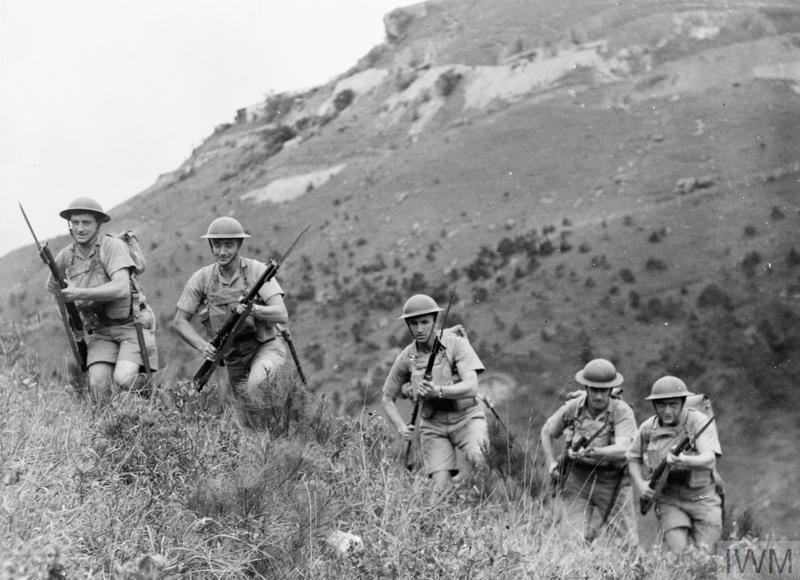
Canadian Troops in Training Hong Kong © IWM KF 189
Hong Kong was subject to brutal street-to-street, house-to-house fighting during December 1941. Despite valiant efforts by the city’s defenders, the highly motivated Japanese troops gradually wore down the opposition.
Major-General Maltby and Governor Sir Mark Young surrendered on Christmas Day 1941. Fighting would continue onwards until 02.30 on December 26th, Boxing Day, as Brigadier Wallace commanding a section of the defence refused to surrender without direct orders from Maltby.
216 defenders of Hong Kong fell on 25th December 1941. Those with no known grave are commemorated on the Sai Wan Memorial. The other Christmas Day casualties of the Fall of Hong Kong today lie in either Stanley Military Cemetery or Sai Wan War Cemetery.
Although not a Christmas Day death, the highest-ranking Commonwealth casualty of the Battle of Hong Kong was Canadian Brigadier John K. Lawson.
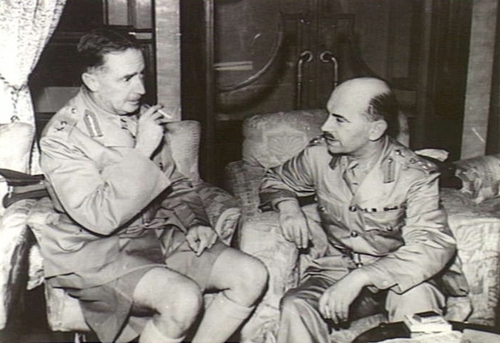 Image: Brigadier John K. Lawson, right, confers with Brigadier General Christopher Maltby (Wikimedia Commons)
Image: Brigadier John K. Lawson, right, confers with Brigadier General Christopher Maltby (Wikimedia Commons)
John commanded the West Brigade, one of the two brigades formed to defend Hong Kong by Brigadier-General Maltby.
John and his men took part in fierce, desperate fighting as West Brigade attempted to hold the line against the Japanese onslaught.
West Brigade’s HQ was eventually surrounded while defending the important Wong Nai Chong Gap in the mountains north of the city.
John radioed his commanders to let them know he was “going outside to fight his way out”. He took several of his officers with him and attempted to affect a breakout.
Making his way out of his HQ building, John was struck by fire from a Japanese machine gun. He was killed instantly.
When his body was discovered, John was buried with full military honours by Imperial Japanese Forces. Today, John is commemorated at Sai Wan War Cemetery.
Christmas casualties: 1942
After Hong Kong fell in December 1941, Malaysia and Singapore were next on the chopping block.
Kuala Lumpur was captured by Imperial Japanese forces on the 11th of January 1942.
One of The British Empire’s most important Asian possessions, the fall of Singapore was a seismic event. Britain’s prestige in Asia was shattered and the Japanese gained another important possession.
Singapore fell on 15th February 1942 after a period of desperate fighting.
Even worse, the Japanese were also making inroads into Burma (present-day Myanmar). Burma was essentially the gateway to India. Invasion of mainland India became a very real possibility.
British troops withdrew in early March with Burma’s capital Rangoon taken by the Imperial Japanese Army on 9th March 1942. Japan now controlled huge swathes of territory from Korea in the north to Java and New Guinea in the south with the Dutch East Indies (present-day Indonesia) in its sights.
Unfortunately for the Japanese, they attacked Pearl Harbour in 1941, dragging the United States into the war. However, it would still take years for the British Empire, particularly the fighting men of the Indian Army and Anzac troops, alongside their American Allies to defeat the Japanese.
However, 1942 did bring some successes. Indeed, for many, 1942 was a crucial turning point in the war.
On the Eastern Front, the German onslaught into Russia and the Soviet Union was losing momentum. The Red Army was beginning to counterattack in some of World War Two’s most epic, titanic battles.
At sea, The Battle of the Atlantic and control of the vital trade routes was gradually being won. Advances in technology and inter-service cooperation between the Royal Navy, Fleet Air Arm, RAF and American naval forces stymied the Kriegsmarine’s efforts to starve the British Isles.
In North Africa, the Desert Fox Erwin Rommel and his Afrika Korps was still proving a formidable foe. However, a wholesale reorganisation of British Army forces present in the desert eventually turned the tide.
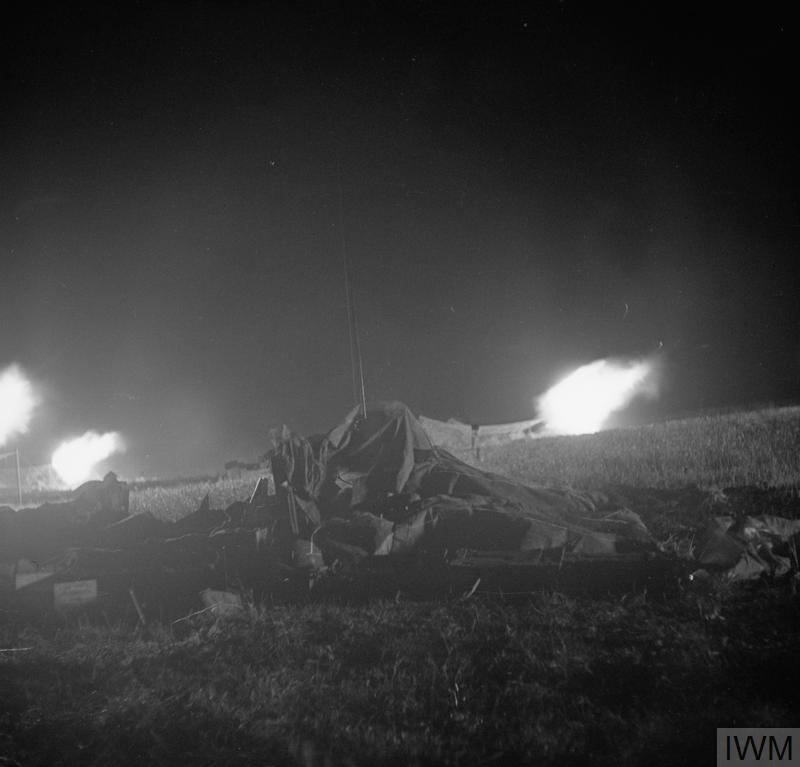
British artillery booms during the fighting for Longstop Hill, Tunisia (© IWM NA 2245)
Following on from gains made by General Claude Auchinleck, British General Bernard Montgomery and the remotivated, reorganised 8th Army crushed Rommel at the Second Battle of El Alamein, Egypt, in November 1942.
The African theatre of World War Two covered thousands of miles and stretched essentially from Morocco to Egypt. While Montgomery and the 8th Army were pushing Rommel out of Egypt and into Libya, further Allied landings were taking place in Morocco, Algeria, and Tunisia.
Operation Torch, a joint operation between British and Commonwealth troops and the US, saw multiple landings across North Africa. The goal was to tighten the ring around the Afrika Korps and knock them out of the war once and for all.
The Run for Tunis as it became to be known began in mid-November 1942. Two Allied columns pushed into Tunisia, driving the Wehrmacht forces back. But with most Allied advances, there were still drawbacks.
In December, Axis armies began a counterattack to push back the Allies. The British contingent had steadily been making progress towards Tunisia’s capital city of Tunis during November but now had been thrown back to a defensible position of high ground called Longstop Hill.
Longstop Hill was first cleared of the 10th Panzer by the 23rd Coldstream Guards on 23rd December 1942.
A German counterattack retook Longstop Hill, quickly reversing the gains made by the Coldstream Guards. With ammunition and supplies running low, the British had to withdraw. They retreated from Longstop Hill on Christmas Day.
The battle for North Africa was grinding along. It would not be until May 1943 that Rommel would be defeated in Africa for good.
Casualties from the Longstop Hill fight, and the wider push into Tunisia, are commemorated at Medjez-el-Bab War Cemetery. Those with no known grave are commemorated on the Medjez-el-Bab Memorial.
Christmas casualties: 1943
Was 1943 the year events began to swing in the Allies’ favour?
The Battle of Stalingrad came to a close in February. For many Stalingrad was a major turning point on the Eastern Front. The German war machine had broken itself on the stubborn city after the defenders’ heroic, yet incredibly costly, defence.
The United States was also beginning to make progress in the Pacific. The strategically important island of Guadalcanal was captured by US in mid-February.
Burma, however, remained in the hands of the Imperial Japanese.
Far-ranging raiding expeditions behind enemy lines with the newly formed Chindits saw the British pursue a new strategy in Burma. The goal was to hit important enemy bases and melt away into the jungle. While they’ve become iconic, the Chindits would meet with limited success.
In North Africa, Rommel was finally caught and decisively defeated at the Battle of Medenine as part of the Tunisia Campaign. The remaining Afrika Korps troops fully surrendered in May 1943.
With success in North Africa, the Allies turned their attention to a new Mediterranean theatre: Italy.
The attack on Italy was conceived to relieve pressure on the Eastern Front and Red Army, as well as a way to knock Fascist Italy out of the war altogether.
On 10th July 1943, the Allied invasion of Sicily, Operation Husky, began. The joint British-US operation would capture the island gateway to mainland Italy in just over a month. However, despite Winston Churchill’s description of Italy as “Europe’s soft underbelly”, the assault on the mainland would be anything but easy.

Canadian troops retreat from a German counter-attack during the battle for the Moro River, Italy (Wikimedia Commons)
The British XXIII Corps made the first landings on September 3rd, 1943. A secret armistice with Italy had been signed the same day, technically marking the Italian’s official surrender. Mussolini was soon deposed, and a provisional, pro-Allied commentary installed.
Germany subsequently enacted Opeartion Achse: the disarmament of their erstwhile Italian allies. Former dictator Benito Mussolini, who had been taken into custody and moved around Italy to keep his location secret, was in German hands by September 1943.
The Italian Socialist Republic, essentially the top half of the country including Rome, was established around the same time. Mussolini was placed in control as Germany’s puppet.
Germany was determined to not give an inch of Italy. Hitler had a complete obsession with his “southern flank”, thus more troops were funnelled to the Italian front. Under Wehrmacht General Albert Kesselring, several country-spanning defensive lines were established up and down the length of Italy.
If dogged German resistance wasn’t enough, the Allies would have to contend with incredibly difficult terrain and awful weather. Autumn rains turned roads and fields into churning mud baths. The winter bought wind, sleet, and snow.
During the festive period of 1943, the Allies were making attacks on the Sangro and Moro rivers towards Italy’s Adriatic coast. German defensive positions incorporated river crossings at the Sangro and Moro as part of the Bernhardt Line.
The Sangro was crossed on 28th November thanks to assaults by New Zealand and Indian army troops while attacks on the Bernhardt Line began on 1st December 1943.
Canadian forces were leading the assault across the Moro with full-scale assaults beginning on December 6th. Resistance was stiff, but by the 20th of December, the Canadians had crossed the Moro and were striking for the strategically important town of Ortana.
German resistance was stiff. The German 3rd Parachute Regiment was holding Ortana and refused to give it up. For many soldiers of the 1st Canadian Infantry Division, Christmas Day 1943 was spent attempting to flush German paratroopers out from the streets and buildings of Ortana.
Ortana fell on the 28th of December, but for 61 Canadian soldiers, Christmas Day was their last spent on Earth.
Today, those men are buried in the Moro River Canadian War Cemetery.
Amongst the Canadian fallen who died on Christmas 1943 was Major Alexander Railton Campbell.
During a lull in the fighting in Italy, Alex crystallised his thoughts on leadership and his emotions taking men forward in the poem Prayer Before Battle. An extract is below:

Prayer Before Battle
“Make me more willing to obey,
Help me to merit my command,
And if this be my fatal day,
Reach out, Oh God, Thy Guiding Hand,
And lead me down that deep, dark vale.
These men of mine must never know
How much afraid I really am,
Help me to lead them in the fight
So they will say, ‘He was a man’”.
Christmas casualties: 1944
1944 was a year of ups and downs for the Allies but it had seemed like balance of the war was now swinging firmly their way.
The Italian Campaign would grind on as slowly but surely the multinational force under British command and their American counterparts pushed the Germans back. On June 4th, two days before D-Day, the Allies entered Rome and captured the Italian capital.
There is of course D-Day. Little more needs to be written about Operation Overlord and the Normandy Campaign. The joint US-British operation, including Canadians and other Commonwealth troops, has become the stuff of legend.
France was liberated in September 1944. The Allies turned their eyes to the Netherlands following the successes in Northern France.
The ill-fated Operation Market Garden was not a success, despite the titanic efforts of British, Polish and American paratroopers. Ultimately, the campaign to liberate The Netherlands and Belgium would roll on into 1945.
In the Pacific theatre, the United States was inflicting defeat after defeat on their Japanese adversaries. ANZAC troops from Australia and New Zealand also played an important role in pushing the Pacific War towards its final victorious conclusion.
Then there was Burma.
Imperial Japan was still in control of Burma by late 1944. However, in the earlier part of the year, the Japanese high command orchestrated an attempted invasion of India.
At Imphal and Kohima in northwest India, the invasion forces were checked and ultimately annihilated by the Indian Army under General William Slim.
Japanese defensive Burmese campaigns of 1943 had kept Britain and Indian armies out of Burma. But with the failure of the Indian invasion, coupled with American and ANZAC advances in other areas of the Far East, meant Burma had become increasingly vulnerable.
One of the key targets for this renewed phase of Allied attacks on Burma was Akyab (present-day Sittwe) on Burma’s west coast.
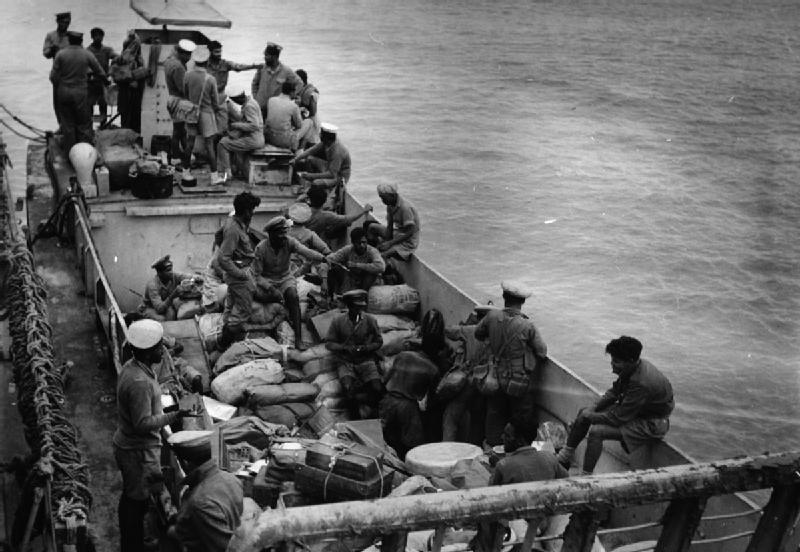
Indian troops during the 1944 Burma Campaign (Wikipedia Commons)
Interestingly, the native Arakanese language calls Akyab “Sittwe”, which translates as “the place where the war meets.” Akyab’s strategic potential has been known for centuries so the name is appropriate.
In terms of World War Two, Akyab was home to a deep-water port and an airfield. If the British and Indians were to launch a successful recapture campaign of Burma and capital Rangoon, Akyab would have to be retaken.
Monsoon season soon passed. The 25th Indian Division was soon making its push on Akyab in December 1944 with a series of amphibious landings. They were supported in the effort to take Akyab by the 81st and 82nd (West Africa) Divisions.
As expected when fighting the tenacious, near-fanatical, Imperial Japanese Army, these Indian and African units took many casualties. They were still able to inflict a heavy toll on their Japanese opponents.
Akyab itself had been cut off from its lines of supplies and communications when the two African divisions met at Myohaung at the mouth of the Kaladan river. With the noose tightening, the Japanese evacuated Akyab on 31st December 1944.
We commemorate some 24 casualties who died on Christmas Day 1944 while fighting in Burma. That represents 10% of the 204 Christmas casualties we look after from 1944 were sustained during the Burma Campaign.
The bulk of these Burmese casualties are commemorated on the Rangoon Memorial, indicating they have no known grave. The youngest, Sepoy Abdul Jabar, was just 17 years old when he died serving in the Indian Observer Corps.
Two others, Sepoy Pyara Singh of the 2nd Punjab Regiment and Private Dennis Norris of the Royal Berkshire Regiment, are commemorated at the Taukkyan Cremation Memorial and the Taukkyan War Cemetery respectively.
Learn more about the war dead we commemorate with CWGC search tools
Uncover more stories of those we commemorate and our cemeteries and memorials with our search tools.
Find War Dead lets you access our entire casualty database. If you’re tracking down a loved one or want to learn more about regimental history, this is the place to start.
Interested in visiting one of our sites? Use our Find Cemeteries & Memorials tool to discover where you will find CWGC war graves and how to get there.

